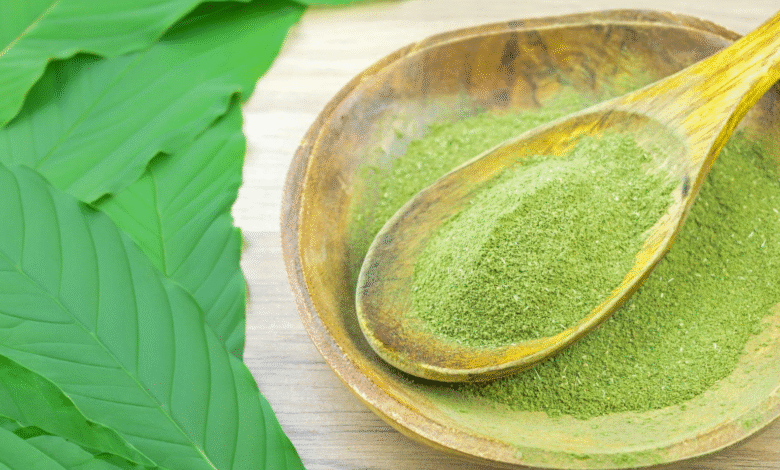Exploring Kratom’s Alkaloid Profile: The Science Behind the Plant

The fascinating world of ethnobotany has seen increasing interest in Mitragyna speciosa, commonly known as kratom. This tropical evergreen tree native to Southeast Asia has garnered attention for its complex alkaloid profile that gives the plant its unique properties. With growing curiosity about traditional botanicals, Kratom Online Canada has become a topic of interest for those researching this ancient plant’s scientific composition.
The Complex Chemistry of Kratom
At the heart of kratom’s scientific interest lies its rich alkaloid profile. Unlike simple botanical compounds, kratom contains over 40 structurally related alkaloids, creating a complex phytochemical profile that has intrigued researchers for decades. This complexity explains why different varieties and even harvests can demonstrate varying characteristics.
The primary alkaloids in kratom include mitragynine and 7-hydroxymitragynine, which constitute approximately 66% and 2% of the alkaloid content, respectively. These compounds are classified as indole alkaloids, sharing structural similarities with yohimbine. Other significant alkaloids include paynantheine, speciogynine, and mitraphylline, each contributing to kratom’s overall profile.
What makes kratom particularly fascinating from a scientific perspective is how these alkaloids interact with various receptor systems. Research has shown that mitragynine interacts with mu-opioid receptors but in a way that differs significantly from traditional opioid compounds. This unique interaction pattern has become a focal point for researchers investigating the plant’s distinctive properties.
Factors Affecting Alkaloid Content
The science of kratom becomes even more interesting when examining how environmental factors influence alkaloid production. Soil composition, rainfall patterns, sunlight exposure, and harvest timing all play crucial roles in determining the alkaloid profile of kratom leaves.
Studies have demonstrated that mature trees (typically 3-5 years old) produce leaves with more developed alkaloid profiles compared to younger specimens. Additionally, seasonal variations affect alkaloid concentrations, with some research suggesting that dry season harvests may yield different alkaloid ratios than rainy season collections.
Post-harvest processing techniques also significantly impact the final alkaloid composition. Traditional drying methods, including indoor and outdoor drying approaches, can alter the chemical profile of the leaves. For instance, some evidence suggests that fermentation processes used to create “bentuangie” varieties may modify the alkaloid structure in ways that produce distinct characteristics.
Regional Varieties and Their Scientific Distinctions
From a botanical science perspective, kratom varieties from different regions demonstrate fascinating genetic and chemical variations. While all belong to the species Mitragyna speciosa, regional landraces have developed unique alkaloid profiles based on local growing conditions and selective cultivation.
Indonesian varieties, particularly those from Borneo, often show distinct mitragynine concentrations compared to Thai varieties. Malaysian kratom typically presents a different alkaloid ratio than varieties from Sumatra or Java. These regional differences reflect the plant’s remarkable ability to adapt to local environmental conditions through altered phytochemical production.
Modern analytical techniques including high-performance liquid chromatography (HPLC) and mass spectrometry have allowed scientists to create increasingly detailed profiles of these regional varieties, mapping their unique alkaloid fingerprints with unprecedented precision. These advanced testing methods reveal subtle differences that might explain the varying experiences reported by botanical researchers.
The Evolution of Kratom Research
Scientific interest in kratom has evolved significantly over the past few decades. Early research focused primarily on basic alkaloid isolation and identification, while contemporary studies have expanded to investigate receptor binding profiles, metabolic pathways, and potential applications.
Advanced genomic research has begun mapping the genes responsible for alkaloid production in kratom, potentially opening new avenues for understanding how the plant synthesizes its complex chemical compounds. This genetic research may eventually help explain the remarkable diversity observed in kratom varieties.
International research collaborations have accelerated our understanding of kratom’s complex chemistry. Scientists from countries including Malaysia, Thailand, Japan, and the United States have contributed valuable insights into the plant’s biochemical properties, creating a more comprehensive picture of this fascinating botanical.
The Importance of Laboratory Testing
For those studying kratom, understanding the importance of analytical testing has become essential. Modern laboratory techniques can verify alkaloid content, detect potential contaminants, and confirm botanical identity—all crucial factors for researchers working with plant materials.
Current testing protocols typically include analysis for:
- Alkaloid content and ratios
- Microbial contamination
- Heavy metals
- Pesticide residues
- Correct botanical identification
These comprehensive testing approaches help ensure that botanical samples used in research meet appropriate standards for scientific investigation. The development of standardized testing protocols represents a significant advancement in kratom research methodologies.
The Future of Kratom Science
The scientific exploration of kratom continues to evolve, with researchers developing increasingly sophisticated methods to understand its complex biochemistry. Emerging areas of investigation include metabolomics approaches that map the full range of compounds produced by the plant and advanced receptor binding studies that examine subtle differences in alkaloid interactions.
As analytical technologies advance, our understanding of kratom’s complex chemistry will likely continue to expand. New chromatography techniques and mass spectrometry methods offer unprecedented sensitivity for detecting even trace compounds that may contribute to the plant’s overall profile.
The intersection of traditional knowledge and modern scientific investigation presents a fascinating frontier for kratom research. Ethnobotanical information from regions where kratom has been traditionally used provides valuable context for scientific investigations, creating a more complete understanding of this remarkable plant.
For those interested in the scientific aspects of kratom, staying informed about emerging research offers valuable insights into this complex botanical. As analytical techniques continue to advance and international research expands, our understanding of kratom’s unique chemical properties will undoubtedly deepen, shedding new light on one of ethnobotany’s most fascinating subjects.



